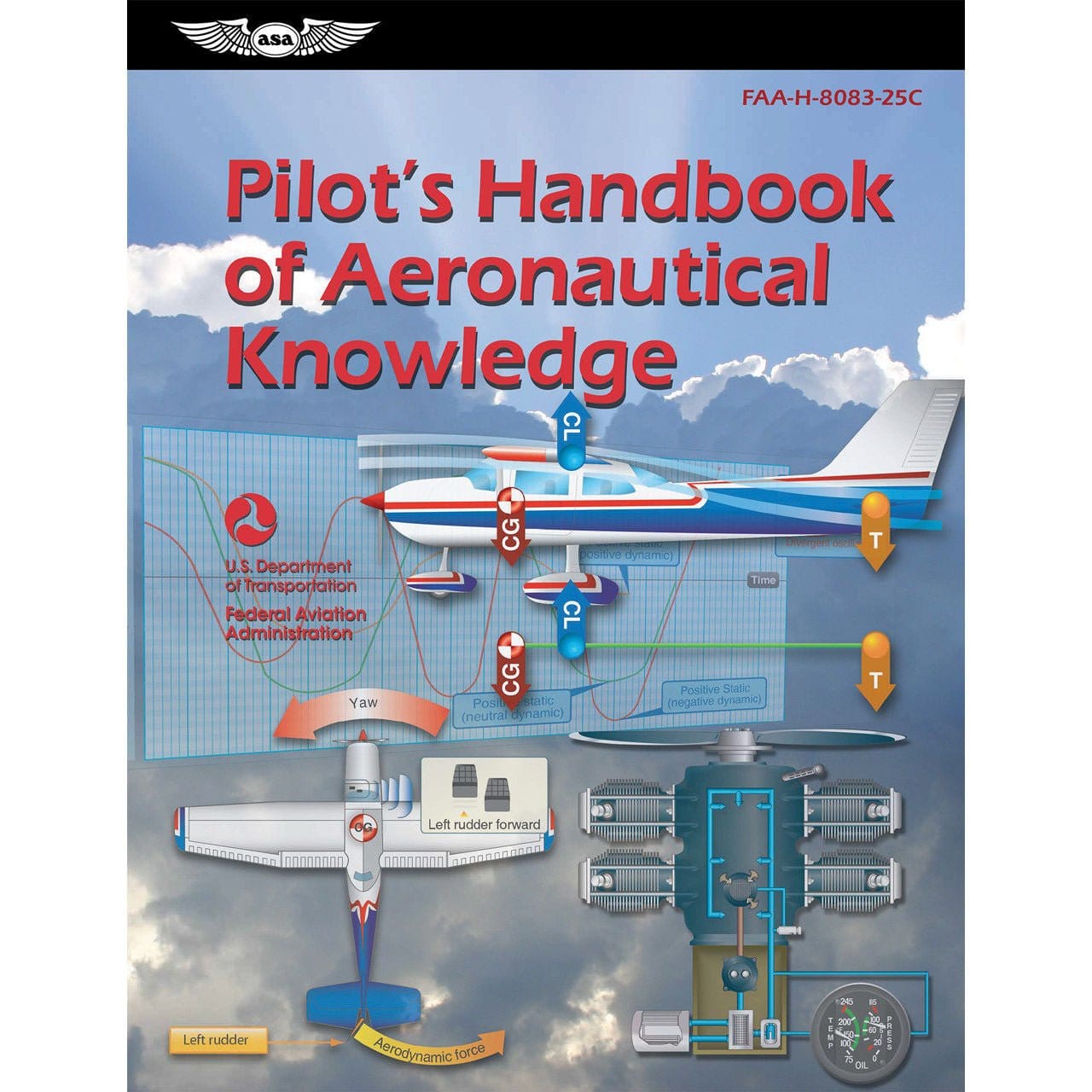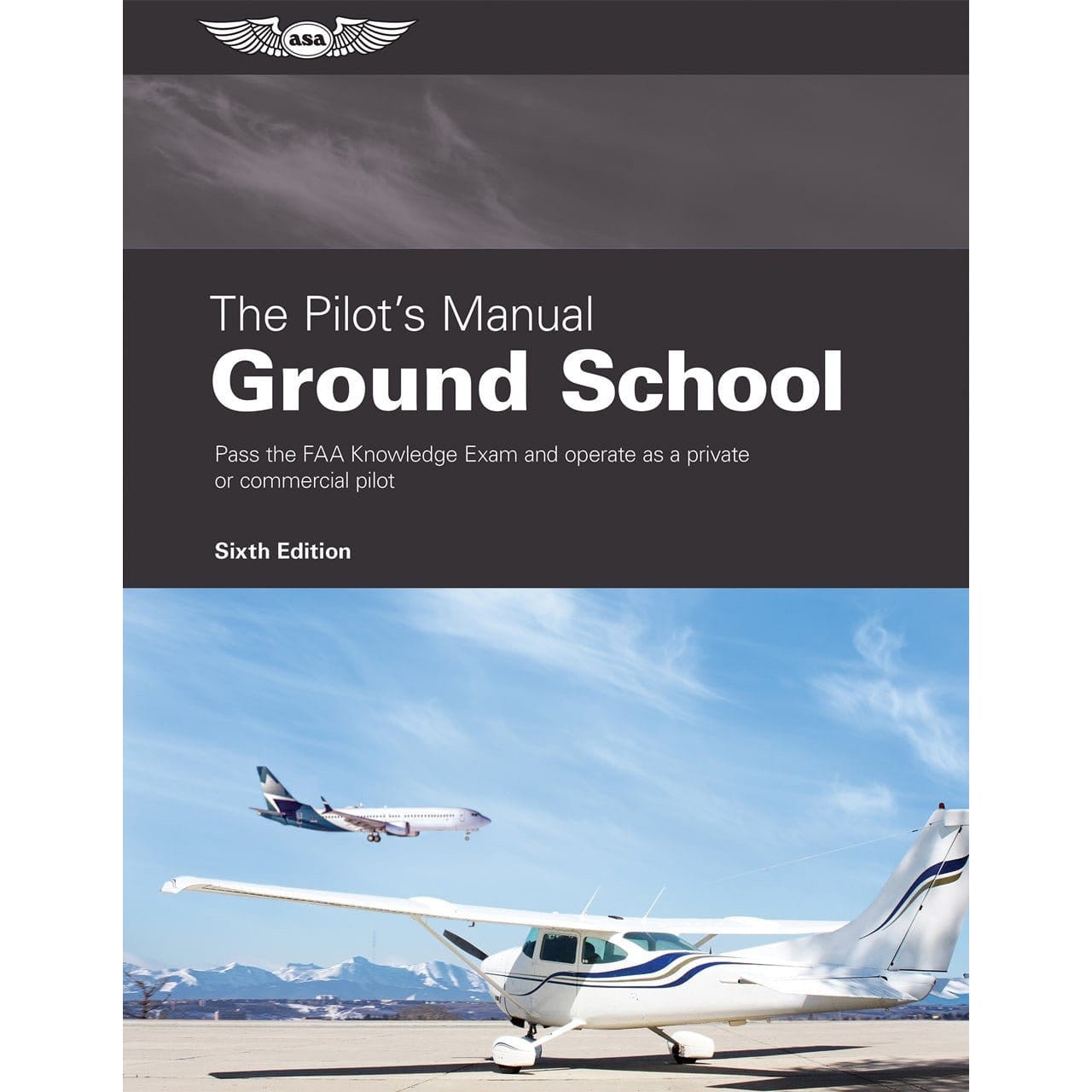Learning from the fatal mistakes of others is unfortunately a reality in the aviation world. The more we study and review what went wrong on other flights, the better prepared we will be to manage or avoid similar dangers on our own flights.
When we ask, “what is the most common cause of plane crashes?” the sad answer is “human error.” So, are most plane crashes avoidable?
Since 50-75% of aviation accidents are caused by human error, the answer is a resounding “yes.”
Today we will share case studies highlighting eight types of human-error induced aviation disasters and the learning lessons we can take from each.
Table of Contents
- Radio Miscommunication
- Controlled Flight Into Terrain (CFIT)
- Fuel Exhaustion
- Forcing a Landing
- "Get There-itis"
- Poor Maintenance or Repairs
- Checklist Failures and Overlooking Little Details
- Pilot Handling Errors
Ready to honor the memory of those who were lost by learning from their experiences? Let’s get started.
1. Radio Miscommunication
Communication is vital in the cockpit, and communications breakdowns are one of the main causes of preventable airplane crashes and close calls. Here are a couple examples of com failures between pilots and ATC:
KLM Flight 4805 and Pan Am Flight 1736

(By Unknown; uploaded to commons by User:Mr.Nostalgic in light of a donation by the Dutch National Archives - file here, CC0, https://commons.wikimedia.org/w/index.php?curid=70312600)
One of the most well-known preventable airplane disasters took place in 1977. The incident involved KLM Flight 4805 and Pan Am Flight 1736, both of which were due to take off from Tenerife, Canary Islands.
A series of unusual events caused a single runaway to be used by a PanAm aircraft taxiing from one end as well as a KLM plane starting its takeoff run on the opposite end.
The KLM pilot who was taking off misunderstood the tower controller, and the pilot believed he was cleared for takeoff. In fact, the Pan Am pilot was still taxiing toward the KLM plane on the same runway looking for a suitable exit.
Due to dense fog, the pilots didn’t see each other until it was too late. The KLM pilot was just beyond V1 speed, so he attempted to rotate but skimmed the top of the Pan Am flight before crashing and bursting into flames farther down the runway.
All 248 people on board KLM 4805 died in the plane crash along with 335 people on board PanAm 1736. There were 61 survivors from the PanAm aircraft. With a combined total of 583 deaths, this remains the worst accident in aviation history.
Learning Lesson:
Standard aviation phraseology was implemented because of the Tenerife disaster. Remember to always use and listen for standard phrases like “cleared for takeoff, cleared for taxi, cleared for landing, hold short, etc.”
If you receive an ATC instruction or clearance that is nonspecific, ask for clarification. Also, never simply assume you know the location of other nearby aircraft that could be a factor in your flightpath.
Avianca Flight 52

(By National Transportation Safety Board/Junta Nacional de Seguridad del Transporte - , Public Domain, https://commons.wikimedia.org/w/index.php?curid=40996051)
In 1990, Avianca Flight 52 had flown from Bogota, Colombia to New York City, in the United States, and was waiting to land at JKF. Fog was limiting JFK’s capacity for arrivals and departures, so Flight 52 was instructed to remain in the holding pattern for more than an hour.
After seventy-seven minutes of holding, air traffic control JFK checked in with Flight 52 to ask how long they could continue to hold. The first officer said the plane had just 5 minutes of hold time available and no longer had sufficient fuel reserves to divert to their backup airport in Boston.
The controller cleared Flight 52 for an immediate landing, but the plane almost crashed due to windshear when flying the ILS approach. The Avianca pilot called a missed approach, but he lacked fuel reserves to make another approach.
Although the pilot instructed the first officer to tell Air Traffic Control they had a fuel emergency, the first officer worded the transmission as “we’re running out of fuel.” Based on this less critical sounding message, the controller instructed Flight 52 to climb and began setting the plane up for another approach.
Flight 52 was 15 miles out from the airport when the fuel ran dry, all four engines cut out, and the aircraft crashed into a residential neighborhood killing 8 of the 9 crew members and 65 of the 149 passengers on board.
Learning Lesson:
If you have an emergency, say so. Do not downplay the severity of your situation. If there is a language barrier or a controller just doesn’t seem to be understanding the urgency of the matter, reiterate it.
Advise them you are unable to comply if they issue directions that will put your aircraft at risk. Also, be proactive when advising ATC about situations like impending low fuel. Whenever possible, give the controller enough advance notice that they can work with you to resolve the situation before it becomes critical.
2. Controlled Flight Into Terrain (CFIT)
Controlled flight into terrain, or CFIT, accidents occur when a pilot unintentionally flies an airworthy aircraft into the ground, a body of water, a building, mountain, or other obstacle resulting in a plane crash. These types of accidents are often due to visual and/or spatial disorientation from flying in clouds or at night, but CFIT can happen on clear days as well.
Although the example below is of a commercial flight, general aviation pilots should know that 80% of all CFIT accidents involve GA aircraft, and 75% of those accidents end in the death of all on board.
American Airlines Flight 965

(By Aero Icarus from Zürich, Switzerland - 12ca - American Airlines Boeing 757-223; N650AA@MIA;31.01.1998, CC BY-SA 2.0, https://commons.wikimedia.org/w/index.php?curid=26675768)
In 1995, American Airlines flight 965 was enroute from Miami, Florida in the United States to Cali, Colombia when a series of misunderstandings between the pilots and Air Traffic Control paired with flight management system (FMS) input mistakes caused the pilots to become disoriented over the Andes mountains.
As the pilot and first officer attempted to “fix” their FMS which they believed was giving them incorrect position and heading data, they were in fact flying dangerously close to the mountain peaks outside of Cali.
When the ground proximity alert finally sounded, the pilots attempted to pull up but forgot to retract the speed brakes they had extended in anticipation of landing in Cali (read all the details of the accident to get the back story). The plane crash took place on the icy mountain killing all but four of the 163 people on board.
Learning Lessons:
Terrain familiarization preparation and in-flight situational awareness are vital. If automated systems seem to be malfunctioning or are giving you confusing data, go back to basics and continue flying the aircraft. Altitude is safety, especially in unfamiliar areas.
3. Fuel Exhaustion
If flight planning and fuel management are done correctly, there are few instances in which an aircraft should ever run low on fuel. Unfortunately, the NTSB found that historically more than 50 accidents a year are caused by fuel management issues, and human error contributed to 95% of said accidents.
Here are two examples:
Air Canada Flight 143

(By FAA - https://lessonslearned.faa.gov/ll_main.cfm?TabID=1&LLID=73&LLTypeID=14, Public Domain, https://commons.wikimedia.org/w/index.php?curid=92661048)
In 1983, Air Canada Flight 143 earned the nickname the “Gimli Glider” after it ran out of fuel at 41,000 feet and pilot Robert Pearson expertly glided the Boeing 767-233 jet in for an emergency landing at Gimli Airport in Ontario, Canada. Although there were a few minor injuries from the plane crash, all 69 people on board survived.
The source of the problem was an incorrect fuel load entry made by the ground crew and later approved by the flight crew. The fuel load was calculated in pounds instead of kilograms, meaning that the plane received less than half of the planned fuel.
The onboard management computer showed plenty of fuel throughout the flight due to the incorrect data input. Complicating the matter, an electronic fault had caused the fuel gauges to be inoperative, so the pilots had no way to crosscheck the management computer’s data and realize they were flying on fumes.
Learning Lesson:
The flight crew likely missed the data entry error with the fuel load due to confirmation bias. They knew how much fuel they ordered, and when they saw that number, they missed noticing that the value was in pounds rather than kilograms.
This could easily have been a fatal error. Avoid this mistake by forcing yourself to consciously check every detail when confirming data. Coach yourself to look for the mistake rather than confirm the accuracy.
It also helps to do a double check by looking away, thinking about something else, and then returning and re-verifying the information you are crosschecking.
United Airlines Flight 173

(By Clint Groves - https://www.airlinefan.com/airline-photos/United-Airlines/Douglas/DC-8-61/N8082U/5308702/, GFDL 1.2, https://commons.wikimedia.org/w/index.php?curid=88963308)
In 1978, United Airlines Flight 173 was preparing to land in Portland, Oregon when it experienced a landing gear malfunction. The captain and crew couldn’t tell if their right main landing gear had deployed correctly. For an hour, they flew a holding pattern around the airport as they troubleshot the problem.
The flight engineer hinted to the captain that the plane was getting dangerously low on fuel, but by the time the captain and first officer realized the gravity of the danger, it was too late. The plane ran out of fuel and crash landed in a suburban Portland neighborhood killing 10 people on board.
Learning Lesson:
Crew Resource Management (CRM) was developed because of this accident. When flying with other crew members, ensure that every crew member has a voice rather than simply agreeing with and deferring to the pilot. Situational awareness and the dangers of problem fixation also come into play here.
The captain became so focused on the landing gear problem that he lost sight of the big picture which included his fuel endurance for the unexpectedly extended flight time.
Regardless of what other problems we are dealing with, we still need to fly the aircraft and maintain a high situational awareness.
4. Forcing a Landing
When setting up for an approach to landing, we must always be prepared to abort the landing and do a go around if conditions warrant it. By committing to landing no matter what, we can make a dangerous situation worse as the pilots in our next case study did.
Delta Airlines Flight 191

(By National Transportation Safety Board - [1], Public Domain, https://commons.wikimedia.org/w/index.php?curid=40996252)
In 1985, Delta Airlines Flight 191 was approaching to land at Dallas-Fort Worth, Texas. The weather had been spotty with rain showers and scattered clouds. As Flight 191 was on short final and cleared to land at DFW, the first officer noticed lightning coming from the cloud directly in front of them.
At just below 1,000 feet AGL, the flight entered the cloud and encountered microburst-induced severe low-level wind shear. The captain attempted to engage the aircraft’s take-off/go-around (TO/GA) switch, but it was too late. The plane crashed, killing 134 people on board plus the driver of a car that the plane struck on impact. Twenty-nine people on board survived.
Learning Lesson:
Although the pilot did attempt a go-around, he waited until the very last minute to do so. The approach to landing was questionable from the start and should clearly have been aborted when the first officer observed lightning directly in the plane’s flight path.
Microbursts are a real, well-documented danger that make flying through thunderstorm clouds not worth the risk.
5. “Get There-itis”
Both commercial and GA pilots can suffer from such pressure to get to their destination that they lose sight of the big picture and whether their original fight plan is still safe and viable. Here is an example:
American Airlines Flight 1420

(By NTSB - https://aviation-safety.net/photos/displayphoto.php?id=19990601-0&vnr=2&kind=C, Public Domain, https://commons.wikimedia.org/w/index.php?curid=75776079)
In 1999, American Airlines Flight 1420 was scheduled to fly from Dallas-Fort Worth, Texas to Little Rock, Arkansas. Like the pilots of Delta Flight 191, the pilots of American 1420 also attempted to fly in a thunderstorm. Severe weather had already caused delays, and the pilots were nearing the end of their maximum number of allowable on-duty hours.
On the way to Little Rock, ATC suggested that the pilots “expedite” their arrival to land before the thunderstorms in the area got worse. Neither the controller nor the pilots mentioned options for diverting to avoid the weather.
As they approached Little Rock, lightening was visible, but the pilots thought they could make their landing through a gap in the clouds. When wind conditions forced them to change runways,
Flight 1420 had to circle the airport for final and by the time they prepared to land, the gap between the clouds had closed. Rather than call a missed approach, abort the landing, and divert to a safer airfield, the pilots insisted on forcing what turned out to be an uncontrolled landing. The plane slid off the end of the runway and broke into three pieces killing the captain and 10 of the other 144 people on board. Here is a more detailed breakdown of the events leading up to the landing.
Learning Lesson:
Avoid the dangers of continuation bias which is when you continue with the original plan even if it is now proving to be a questionable or dangerous choice.
Assess each variable as you are presented with it and be willing to alter your course if the situation warrants it. Do not force a course of action and press on just because you feel pressured to get to your planned destination.
6. Poor Maintenance or Repairs
Some accidents are caused by preventable factors that come into play long before a disastrous flight ever takes off. Regular maintenance and proper repairs are vital to the structural integrity and continued flightworthiness of an aircraft.
If corners are cut in either of those areas, the results can easily be catastrophic. It’s just a matter of time.
Here are two examples:
Japan Airlines Flight 123
 (By 運輸安全委員会 (Japan Transport Safety Board), CC BY 4.0, https://commons.wikimedia.org/w/index.php?curid=88315731)
(By 運輸安全委員会 (Japan Transport Safety Board), CC BY 4.0, https://commons.wikimedia.org/w/index.php?curid=88315731)
In 1985, Japan Airlines Flight 123 was enroute from Tokyo to Osaka. Unbeknownst to the flight crew, one of the plane’s stabilizers had undergone an improper repair job after suffering a tail strike 7 years earlier.
When the sub-standard repair failed, it triggered explosive decompression and loss of rudder control. Although the pilots managed to fly the plane another 30 minutes, they were unable to land safely, and eventually crashed into a mountain range. Just four passengers survived out of the 524 people on board.
Learning Lesson:
Ensure all repairs to your aircraft are completed by skilled, qualified technicians. Regularly inspect the repair to ensure it is holding up well and not showing signs of impending failure.
If flying commercially, choose an airline with a strong safety and maintenance record. Inspect the logbooks to confirm the frequency of preventative maintenance.
Alaska Airlines Flight 261
 (By Frank Jäger CC BY-SA 2.0)
(By Frank Jäger CC BY-SA 2.0)
In 2000, another stabilizer malfunction killed all 88 people on board Alaska Airlines Flight 261 enroute from Puerto Vallarta, Mexico to San Francisco, California. In this case, poor maintenance policies were to blame.
To cut costs, Alaska had adjusted their fleet maintenance, so it was performed on a less frequent basis. The horizontal stabilizer jackscrew lubrications were one of the items affected by the cuts. Rather than being lubricated every 500 flight hours as recommended by the aircraft manufacturer, the screws were only lubed every eight months, or about every 2,250 flight hours.
Without proper lubrication, the jackscrew can shear off and allow the stabilizer to deflect too far upward or downward. This is what happened aboard Flight 261, and the resulting loss of control led to the fatal crash.
Learning Lesson:
Don’t skimp on aircraft maintenance for your own plane. Follow all manufacturer instructions and best practices. When flying planes owned by others, learn as much as possible about their maintenance policies and watch for flags like extended hours between service.
Whenever possible, conduct a thorough aircraft inspection prior to flying a new aircraft and look for signs of poor maintenance. If you aren’t comfortable with the condition of the plane, speak up. Your life and the lives of your passengers could be at risk.

7. Checklist Failures and Overlooking Little Details
There is a saying that “little things are big things,” meaning that a seemingly inconsequential detail can have much greater consequences than anyone initially thinks. If you’re not convinced, just read this GA accident report for a reminder of the potentially fatal consequences of something as simple as forgetting to attach the gas cap after refueling your plane.
Checklists are meant to help pilots catch everything from the little details up to the bigger key system settings, but checklists only work if they are used correctly each time.
Here are two preventable aircraft crashes that were caused by checklist failures and overlooking seemingly little details:
Helios Airways Flight 522
 (By Mila Daniel - CC BY-SA 4.0)
(By Mila Daniel - CC BY-SA 4.0)
In 2005, Helios Airways Flight 522 crashed into the mountains of Greece, killing all 121 people on board. The accident took place due to cascading complications from multiple checklist failures. A
n engineer who had tested the aircraft’s cabin pressurization system for leaks had switched the system to manual pressurization for the check and forgotten to switch it back to auto once he was finished. The flight crew also failed to catch the manual pressurization setting when they did their own preflight, after-start, and after-takeoff checks.
As the aircraft ascended, the cabin failed to pressurize and alarms went off in the cockpit. The pilots communicated with a technician on the ground trying to troubleshoot what they believed to be a takeoff configuration warning, which had the same alarm tone as a pressurization error.
Tragically, although the tech asked the pilots to check the pressurization setting one more time, by that point, the crew were suffering from severe hypoxia as they had not recognized the need for oxygen masks. They were unable to carry out the tech’s instructions. The flight crew lost consciousness and the aircraft flew on autopilot until it ran out of fuel and crashed.
Learning Lesson:
When conducting a pre-flight check, don’t merely go through the motions and assume everything is correct just because it has been the thousands of other times you’ve run the check. Focus solely on the task at hand and consciously check each item. A single oversight can be deadly.
Nigeria Airways Flight 2120
 (By Pedro Aragão - , CC BY-SA 3.0, https://commons.wikimedia.org/w/index.php?curid=17389882)
(By Pedro Aragão - , CC BY-SA 3.0, https://commons.wikimedia.org/w/index.php?curid=17389882)
In 1991, Nigeria Airways Flight 2120 crashed shortly after takeoff from Sokoto, Nigeria due to a fire. All 261 people on board died in the crash. The fire was caused by a seemingly minor detail: an under inflated landing gear tire. The tire overheated during takeoff and when retracted, started the onboard fire.
Learning Lesson:
A low tire on its own may not have seemed like a major issue that needed to be addressed immediately, but that lack of air pressure killed 261 people. Correct little issues when you see them before they become bigger problems.
8. Pilot Handling Errors
Of the deadliest aviation accidents of all time, multiple were caused by pilot handling errors. Here are two examples:
China Airlines Flight 140
 (By 運輸安全委員会 (Japan Transport Safety Board), CC BY 4.0, https://commons.wikimedia.org/w/index.php?curid=89891247)
(By 運輸安全委員会 (Japan Transport Safety Board), CC BY 4.0, https://commons.wikimedia.org/w/index.php?curid=89891247)
In 1994, China Airlines Flight 140 was descending for landing in Nagoya, Japan when the first officer accidently activated the plane’s takeoff/go-around switch at an altitude of just 1,000 feet. The pilots attempted to override the computer’s inputs but did not disable the autopilot. The conflicting control inputs caused the plane to stall and crash. Only 7 of the 271 people on board survived.
Learning Lesson:
Be very intentional and conscious of your actions and control inputs, especially at lower altitudes where you have little to no margin for error. Practice rapid situational analysis and troubleshooting to maximize your chances of quickly recognizing and correcting dangerous situations when they occur.
American Airlines Flight 587
 (By NOAA, Public Domain, https://commons.wikimedia.org/w/index.php?curid=5204119)
(By NOAA, Public Domain, https://commons.wikimedia.org/w/index.php?curid=5204119)
In 2001, American Airlines Flight 587 crashed shortly after takeoff from New York’s JFK airport due to another pilot error. The investigation found that the first officer had encountered wake turbulence upon takeoff and had responded with a series of overly vigorous and rapidly alternating full rudder inputs.
Although the aircraft was below maneuvering speed, the stress from the inputs caused the vertical stabilizer to shear off. The pilot lost control of the plane, the engines also broke away. All 265 people on board lost their lives in the airplane crash.
Learning Lesson:
Contrary to the popular piloting myth, you can break an airplane when flying below maneuvering speed. Learn your aircraft and know what range of control inputs can be made at each V-speed. Make your inputs as smooth and controlled as possible to put minimal stress on the aircraft.
More safety-focused reads to help you avoid aviation disasters:
-
7 Types of Turbulence Every Pilot Should Know (What Causes It)
-
Power-Off Stall (13 Steps): Complete Recovery Procedure Guide
Ready to log some extra safety training hours and decrease your chances of becoming a statistic? Complete the Gleim Online Safe Pilot Course.

|
Gleim Online Safe Pilot CourseAviation safety is a crucial component of flying that no pilot can afford to neglect. To help you enjoy safe skies on every flight, the aviation-training experts at Gleim have developed a comprehensive online course loaded with tips, tactics, facts, and figures that will better equip you to avoid the hazards inherent to flying. |
It’s your turn to chime in!
Which airplane disaster stories stick with you the most and what lessons have you learned from them?
Have you ever had your own aviation accident or close call?
What happened and how can other pilots learn from your experience?
Share your stories and feedback in the comments below.









4 comments
George Dougherty
One other possible issue on pilots experience. From watching too many aircraft investigations , I think the use of flying hours as a gauge of pilots experience to me is useless. What counts as real experience to me, is hours of simulator practice on real scenarios where lessons were learned and the pilot assessed on their performance on diagnosing the problem/s and how well training kicks in to best cope with it. Particularly when the autopilot has gone off and they either don’t know what to do, or misdiagnose the problem, I have great sympathy for them when diagnosing the problem when its not obvious what is the root cause of it is.
George Dougherty
Why don’t airplane manufactures wrap some kind of bulletproof vest around the engines to prevent loss of controls when a catastrophic engine failure rips through control cables/ hydraulic pipes with possible depressurization and downs the plane. Is it technically not possible that such a cover could be made that would stop the blades causing such destruction? Also I’ve seen too many investigations about pilots not realizing if their autopilot is on or off and fight with plane controls if autopilot is still on or don’t realize its off and until too late. An audible “Autopilot ON” or “Autopilot Off” would give the autopilot a voice without relying on some obscure light change on an instrument in a sea of instruments?
Bob Beresford
A very interesting and sobering collection of incidents that just serve to remind us of our own vulnerabilities. We all must read, remember and concentrate to stay safe !
David Shory
A brief correction: CYGM is located in Manitoba, Canada, not Ontario, Canada.